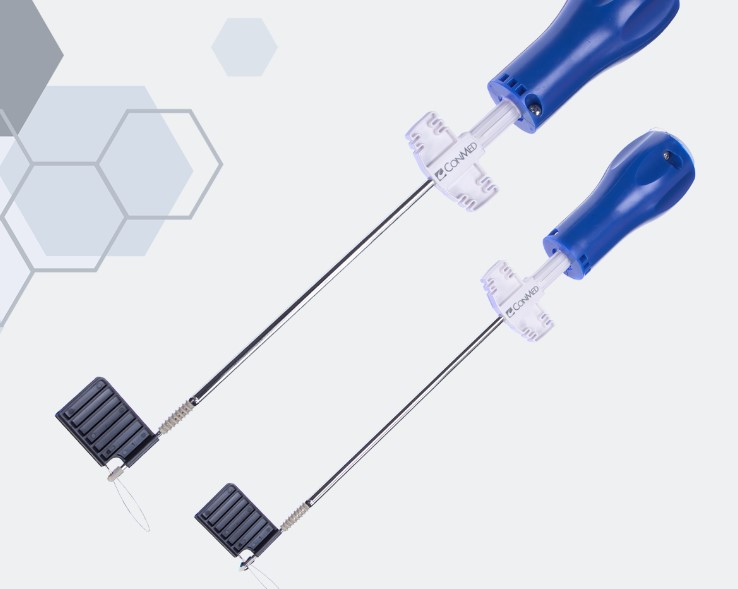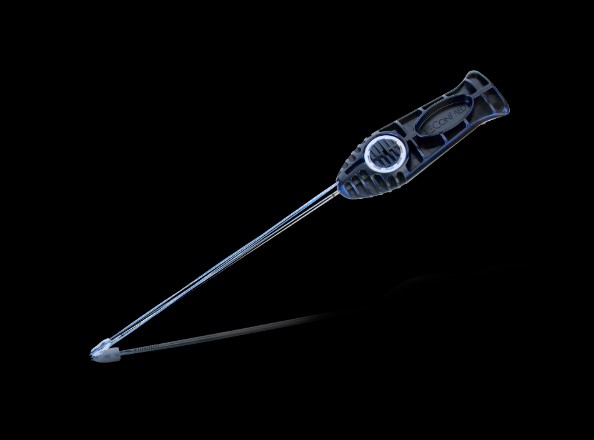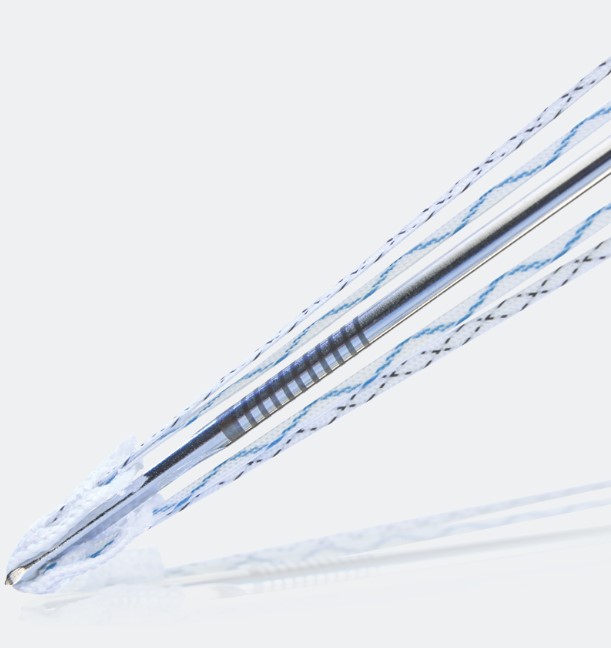Rotator Cuff Repair

Rotator Cuff Repair. Single and double row solutions.
The rotator cuff is made up of four main tendons: the supraspinatus, subscapularis, infraspinatus, and the teres minor. These tendons originate on the scapula and attach onto the humeral head, securing the upper arm in the shoulder joint and allowing for normal shoulder mechanics like lift and rotation. The rotator cuff tendons can be injured acutely but are more frequently torn due to degeneration over time. Tears of the rotator cuff tendons can be classified as partial or full thickness tears.
When faced with a rotator cuff tear, a single or double row repair technique can be used to fixate the torn tendon back down to the bone. CONMED’s CuffLink™ double-row solution offers increased tensioning control and reduced tissue abrasion.(1) Eliminate guesswork and take control of your repair with these simple, reproducible techniques.
Argo Knotless™ Suture Anchor
Key Benefits
Product Overview
This is a system designed to minimize steps, maximize ease, and save you OR time. Argo Knotless® offers the next generation of knotless fixation, so you can maximize control of your technique and your surgical outcomes.
Promoting Simplicity and Control
- Quick Release Driver simplifies anchor disengagement post-insertion, eliminating any need for back malleting
- Extended eyelet enables you to easily capture your suture or tape limbs and accommodate:
- Up to six limbs of #2 Hi-Fi® Suture or Hi-Fi® Ribbon
- Two limbs of Hi-Fi® Tape and two limbs of #2 Hi-Fi® Suture
Optimizing Outcomes
- Smart Tension Technology facilitates consistent suture tension from insertion through deployment
- Vented implant body may incorporate bony ingrowth
- Thread pitch drop-off resists pullout for secure fixation, even in soft lateral bone
A Full Bag of Solutions
- Using Y-Knot® PRO RC Self-Punching All-Suture Anchor for your medial row can minimize steps and anchor footprint
- Allopatch HD® offers a reliable, minimally processed scaffold in massive repair scenarios




Y-Knot® PRO RC Self-Punching All-Suture Anchor
With strong fixation, less bone removal, and a simple, self-punching technique, the Y-Knot® PRO RC helps overcome the trade-offs of other rotator cuff fixation methods.
The first self-punching all-suture anchor available, Y-Knot® RC anchors can help streamline procedures with a fast and efficient technique that eliminates the need to create and find a pilot hole. In addition to requiring less bone removal than larger traditional anchors, the small 2.8mm footprint provides placement and fixation advantages when bone is limited, especially during revisions. It can be used in numerous joint spaces.
The Y-Knot® PRO RC features cleatless suture release technology. This eliminates the need for uncleating sutures after implanting the anchor, providing a more efficient delivery system.
Y-Knot® PRO RC is available with Hi-Fi® Ribbon, Hi-Fi® Tape, and #2 suture.
Hi-Fi® Ribbon is a 1.3mm wide, flat, tie-able tape. It’s 2X wider than #2 suture for broader compression and increased tendon-to-bone interface. Ribbon is also 14% stronger than high-strength USP #2 suture(1) and provides smaller knot stacks than USP #2 suture.(2)
Hi-Fi® Tape is 69% less abrasive than the leading competitor when measuring tendon tear-through.(3) It offers broader compression than #2 suture for increased tendon-to-bone interface and is more than twice as strong as #2 suture.(4) It can help simplify double-row repairs by eliminating the need for medial knot tying.
#2 Hi-Fi® Suture is a braided, non-absorbable suture for soft tissue repair designed to provide exceptional strength for knot tying while helping minimize tendon damage. CONMED’s #2 Hi-Fi® Suture was shown to reduce mean cutting rate by over 50% when compared to FiberWire and FiberTape, which were more abrasive on the suture-tendon interface and led to higher tendon tear-through.(5)
1 Data on file: PDD1494993
2 Data on file: TR17-01219
3 Data on File TR16-787. Compared with FiberTape. TR16-787-1
4 Data on file TR16-219.
5 Deranlot J, Maurel N, Diop A, Nourissat G, et al. Abrasive Properties of Braided Polyblend Sutures in Cuff Tendon Repair: An in Vitro Biomechanical Study Exploring Regular and Tape Sutures. Arthroscopy 2014; 30:1569-73
BioBrace® Implant
Strengthen Your Repair, Optimize Your Healing
1 K203267 – 510(k) Clearance Letter – The BioBrace® Implant
2 Based on preclinical animal data
BioBrace® is highly differentiated.
Unlike traditional implant materials that are either synthetic or biologic, BioBrace® is a biocomposite of both.
Off-the-Shelf
- Ready when you need it
- Easy to use in a variety of techniques
Two Offerings
- For a variety of soft tissue indications
- 5mm x 250mm and 23mm x 30mm
Proprietary Architecture
- Bioinductive yet durable enough to support suturing and cannula passing
- Features a highly porous type 1 collagen matrix (20μm average pore size) reinforced with bioresorbable PLLA microfilaments (15μm diameter)


Info Contact
| HEAD | OFFICE |
| Tel | +27 (11) 966 0600 |
| info@medhold.co.za | |
| Address | MSI Business Park, 68 Rigger Road, Spartan, Kempton Park, Gauteng, 1619 |
